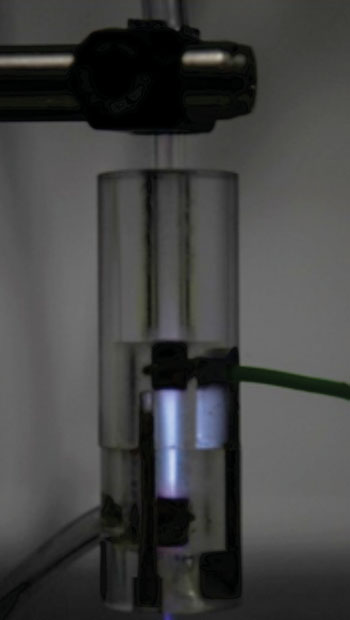Low-Temperature Plasma Treatment Kills Prostate Cancer Cells
By LabMedica International staff writers
Posted on 23 Apr 2015
By combining physics and biology a team of British cancer researchers has shown that low-temperature plasma (LTP) treatment kills prostate cancer cells in culture and may warrant development into a therapeutic tool to replace radiation and photodynamic methods.Posted on 23 Apr 2015
Low-temperature plasmas have shown considerable potential as active agents in biomedicine. They are formed by applying a high electric field across a gas at atmospheric pressure and room temperature, which accelerates electrons into nearby atoms and molecules, leading to a cascade effect of multiple ionization, excitation and dissociation processes. This creates a complex and unique reactive environment consisting of positive and negative charges, strong localized electric fields, UV radiation, reactive species, and mainly background neutral molecules.

Image: Low-temperature plasmas are formed in a chamber like the one shown in the photo by applying a high electric field across a gas at atmospheric pressure and room temperature (Photo courtesy of the University of York).
In the current study investigators at the University of York (United Kingdom) first verified the cytopathic effect of low-temperature plasma in two commonly used prostate cell lines: BPH-1 (benign) and PC-3 cells (malignant). The study was then extended to analyze the effects in paired normal and tumor (Gleason grade 7) prostate epithelial cells cultured directly from tissues taken from the same patient, allowing for direct comparison of the effects of LTP on both normal and cancer cells.
Results published in the April 2, 2015, online edition of the British Journal of Cancer revealed that LTP exposure resulted in high levels of DNA damage in primary prostate cells as well as a reduction in cell viability and colony-forming ability. Hydrogen peroxide formed in the culture medium was a likely facilitator of these effects. Necrosis and autophagy were recorded in primary cells, whereas cell lines exhibited apoptosis and necrosis.
First author Adam Hirst, a doctoral student at the University of York, said, "These results suggest that LTP may be a suitable candidate for focal therapy treatment of patients with early onset prostate cancer through the induction of high levels of DNA damage, leading to a substantial reduction in colony-forming capacity, and ultimately necrotic cell death, in clinically relevant and close-to-patient samples."
The next step in developing this treatment will involve testing the method on three-dimensional replica tumors in order to monitor the precision of plasma application. If all subsequent trials are successful, the researchers believe that LTP could be used to treat cancer patients within 10-15 years.
Related Links:
University of York













